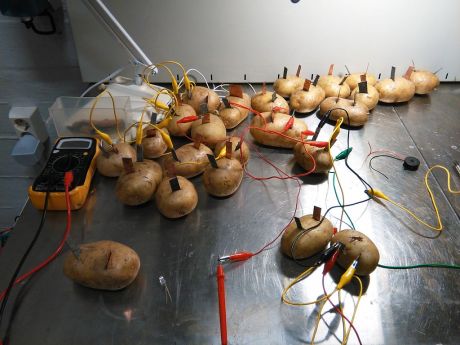
Potato_batteries - real green energy from potatoes by Videokaffe (2015-02-10 by Hannu Makaraine)
By Hannu Makarainen (Sähköä perunoista) [CC BY-SA 2.0 (http://creativecommons.org/licenses/by-sa/2.0)], via Wikimedia Commons
The debate around climate change is essentially over, leaving governments with the difficult task of adjusting policy to mitigate the negative impact of climate change. The Intertemporal Computable Equilibrium System (ICES) model has been built to address this task, but needs more work to provide accurate predictions.
With EU funding, the CLIPOL&TECH (How does climate policy affect the pace and direction of technical change? Theory and applications in a general equilibrium framework) project aimed to improve existing models to help policymakers better understand how policies affect changes in energy technology.
Specifically, CLIPOL&TECH adjusted the ICES model to see how technology, investment and trade policies influence the uptake of new clean technology, and subsequently impact the environment. The project focused on the impact of market uptake and obsolescence of various technologies.
Researchers first investigated the effects of obsolescence costs related to changes in research and development (R&D) focus. They showed that profit-driven R&D is dependent on investment in clean or dirty technology, rather than current production levels.
CLIPOL&TECH applied these theoretical insights to the existing ICES model, developing a new model called ICES-K. The major change was to make capital sector specific and subject to sector-specific depreciation. This restriction makes ICES-K a more realistic model of the energy sector.
In the short-term, the model developed by CLIPOL&TECH will be useful primarily to climate change researchers. However, this research will also have a long-lasting indirect impact on climate change policy around the world.

